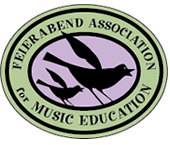by James O. Froseth
Beginning band education researcher Professor Emeritus James Froseth shares distance learning videos. These instrument specific rhythm reading videos take a sound before sight approach. These videos can be shared with your beginning band students via Youtube.
Two pedagogical points that James Froseth wants us to remember as we start new instrumentalist online is 1. “To Teach Is to Show” and 2. “Sounds Like”.
“To Teach Is to Show”
 Beginning instrumental students need models that define each objective. Meaningful practice is virtually impossible without a clear understanding of the objective. These videos entitled “Beginning Band Pedagogy: The Cl. – Flt – A Sax – Trpt – Trb – Euph – Bells, S.D. Set-Up ” provides the student with interactive photos and audio tracks that help to develop the skills required to achieve a successful set-up on their wind instrument.
Beginning instrumental students need models that define each objective. Meaningful practice is virtually impossible without a clear understanding of the objective. These videos entitled “Beginning Band Pedagogy: The Cl. – Flt – A Sax – Trpt – Trb – Euph – Bells, S.D. Set-Up ” provides the student with interactive photos and audio tracks that help to develop the skills required to achieve a successful set-up on their wind instrument.
A “Sounds Like” – “Looks Like” sequence provides a nonverbal way to teach rhythmic pattern reading. Note names and the theory of rhythmic notation follow students’ ability to recognize and perform basic rhythmic patterns in duple meter. This approach is the antithesis of note reading. A student who is taught rhythmic reading by means of note naming and the computation of note values is unlikely to ever become a fluent reader of rhythmic or melodic notation. The last “Look and Say” sequence of each set is designed to assess one’s ability to memorize patterns and read ahead. It may be challenging. Practice until you can Do It!
Note: The phonetic rhythmic syllables employed (Du de – Du da di), simulate musical articulation on a wind instrument, a feature particularly useful to recorder teachers and band directors.
Bio:
James O. Froseth is Professor Emeritus for the Music Education Department at the University of Michigan. He is a leader in the study of music teacher education, in particular, as an advocate of nonverbal modes of music teaching and performance-based assessment of music learning. His band series “Do It” is available from GIA Publications.
